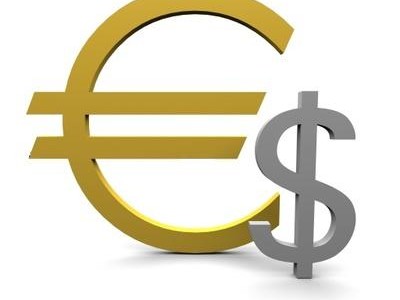How to Use Moving Averages
Technical analysis is very broad based. The study of historical price action includes looking at supply and demand as well as using a broad range of tool and methodologies including specific average and momentum. There are many technical studies that help traders evaluate future momentums for a specific security or market.
Moving averages
One of the most efficient tools a trader may use is a moving average. Traders use moving averages to smooth price action. A moving average removes some of the daily volatility associated with financial markets and is generally calculated based on the daily closing price of a financial instrument. The end result is a trend following indicator that necessarily lags the instrument’s movement and is therefore a reactive tool. Even so, moving averages are very useful tools and are perhaps the most widely used indicators.
Moving averages represent the fair price of a market when averaged across a specific period. Many of the widely used moving averages reflect specific benchmarks. A short term moving average, such as a 5-day moving average, represents a week of trading action, and helps represent a smoothing of price action. The 10-day moving average is half a monthly reporting period, while the 20-day moving average represents a full monthly reporting period. The 50-day moving average reflects a quarterly reporting period, while the 200-day moving average reflects 80% of the year’s report card.
The longer the moving average, the less volatile the price action as it appears on a chart. Moving averages help an investor determine the longer term trend of a financial instrument by removing much of the noise associated with price charts.
As a trader you have to determine the best moving average to use to meet your goals. For example, a short term moving average helps determine short term trends, but will hold on to some of the noise of the daily movements of a market.
Advanced Moving Averages
Exponential moving averages reduce the lag by applying more weight to recent prices. The simple moving average weighs each period equally and therefore it is a lagging gauge of market sentiment. The weighting applied to the most recent price depends on the number of periods in the moving average. The first step in calculating an exponential moving average is to generate a simple moving average. For a 10-day moving average you would calculate the average of the last 10-days and on the 11th day you would drop the first day from the calculation. The next step would be to multiply the exponent you are looking to use to reduce the lag.
Moving average Crossover
There are a number of strategies you may employ when using a moving average. One of the simplest and very effective is the moving average crossover strategy. This strategy entails finding a short term moving average that fits your criteria and evaluating when it crosses either above or below a longer term moving average.
The goal is to analyze the market using this crossover strategy to find the middle of a trend. When you are using short term moving average, for example the 5-day moving average and the 20-day moving average your analysis is geared to finding a short term trend. The longer the tenor of your moving averages, the deeper the trend you are planning on evaluating. One of the most prolific tenors is the 50-day moving average and the 200-day moving average.
When the 50-day moving average crosses above the 200-day moving average, a long term uptrend is in place. This is referred to as the “golden cross”. When the 50-day moving average crosses below the 200-day moving average, a long term downtrend is in place. This is known as the “death cross”
Momentum
Moving average can be used in many ways including finding momentum. Momentum measures the acceleration in price movements. You may determine this be evaluating the change between 2 or more moving average which tells you the change in momentum.
Both the MACD (moving average convergence divergence index), created by Gerald Appel is a momentum indicator that may be used to capture momentum. Momentum reflects acceleration and may be used as a trading signal to either enter or exit a trade.
MACD – Moving Average Convergence Divergence Index
This indicator creates an index level by calculating the change in 2-moving averages (the spread) relative to the 9-day moving average of the spread. The 2-moving averages that are used as defaults are the 12-day moving average and the 26-day moving average. If the spread is less than the 9-day moving average of the spread, the index is negative and therefore momentum is negative. If the spread is above the 9-day moving average of the spread, the index is positive and therefore momentum is positive.
Advanced Momentum
The most common way to use moving average as they relate to momentum is to generate buy and sell signals from the MACD. When the spread of the MACD crosses above or below the 9-day moving average of the spread, a signal is generated. A buy signal occurs when the spread crosses above the 9-day moving average of the spread. A sell signal is generated when the spread crosses below the 9-day moving average of the spread.
In closing, there are a number of technical analysis studies that may be used to determine the potential future direction of the markets. One of the most common and efficient is the moving average. With a moving average you can determine a trend as well as momentum, which may help you develop robust trading strategies.
The post How to Use Moving Averages appeared first on Forex.Info.
Source:: How to Use Moving Averages







